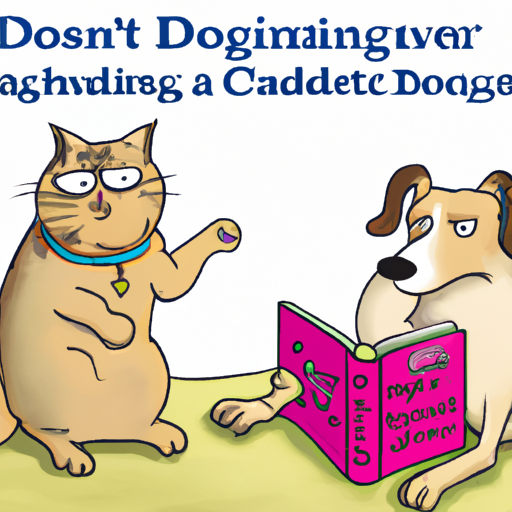Understanding the Basics of Animal Behavior
Animals, just like humans, have their unique personalities, preferences, and idiosyncrasies. You, as a caregiver, might have noticed that your feline friend tends to avoid the neighborhood canine. What fuels this feline-canine rivalry? Well, it’s a blend of evolution, communication, and social structure.
Take a moment to imagine yourself in a foreign country where you don’t understand the language. The gestures, expressions, and sounds that the locals use are incomprehensible to you. This is exactly how cats and dogs feel around each other. Their methods of communication are fundamentally different, leading to misunderstandings and conflict.
The Evolutionary Perspective
Cats and dogs come from different branches of the animal kingdom. Dogs, descendants of wolves, are pack animals. They rely on social structures, hierarchies, and cooperation for survival. Cats, on the other hand, descend from solitary hunters who only interact with others for mating or raising kittens.
| Dogs | Cats | |
|---|---|---|
| Ancestral Behavior | Pack animals, cooperative | Solitary hunters, independent |
| Social Structure | Hierarchical | Mostly solitary |
| Communication Method | Body language, vocal | Body language, scent |
Communication Breakdown
Dogs wag their tails when they’re excited or happy, while cats wag their tails when they’re annoyed or angry. A dog approaching a cat with a wagging tail is likely to startle the cat, making it believe it’s about to be attacked. The dog, in turn, interprets the cat’s defensive posture as a threat, thus escalating the tension.
Social Structure and Territory
Cats are territorial creatures and they view dogs as a threat to their space. Dogs, being social creatures, may view a cat’s independent attitude as aloof or hostile. This contrast in social structures can create friction between the two species.
It’s Not Always a War Zone
While the dog-cat rivalry is a common trope, it’s not always the case. Many households have both cats and dogs living harmoniously. It all boils down to their individual personalities and the environment they’re raised in.
- Socialization: Introducing a cat and dog at a young age can help them understand each other better and foster friendship.
- Training: Proper training can help both animals respect each other’s territory and communicate effectively.
- Patience: It takes time to build a relationship. Rushing the process can lead to more conflicts.
Frequently Asked Questions
- Why does my cat hiss at the dog?
-
Hissing is a cat’s way of expressing fear or discomfort. It’s a warning to the dog to back off.
-
Can cats and dogs live together peacefully?
-
Yes, with proper socialization, training, and time, cats and dogs can coexist peacefully.
-
Why does my dog chase the cat?
-
It could be due to the dog’s prey drive, boredom, or misunderstanding the cat’s body language.
-
How can I introduce my cat to my dog?
- Start by keeping them in separate rooms. Gradually introduce them to each other’s scents before allowing supervised face-to-face meetings.
Remember, as a caregiver, your understanding, patience, and dedication can help bridge the gap between these two beloved pets. Don’t lose heart if progress seems slow. Every step towards harmony is a victory.



